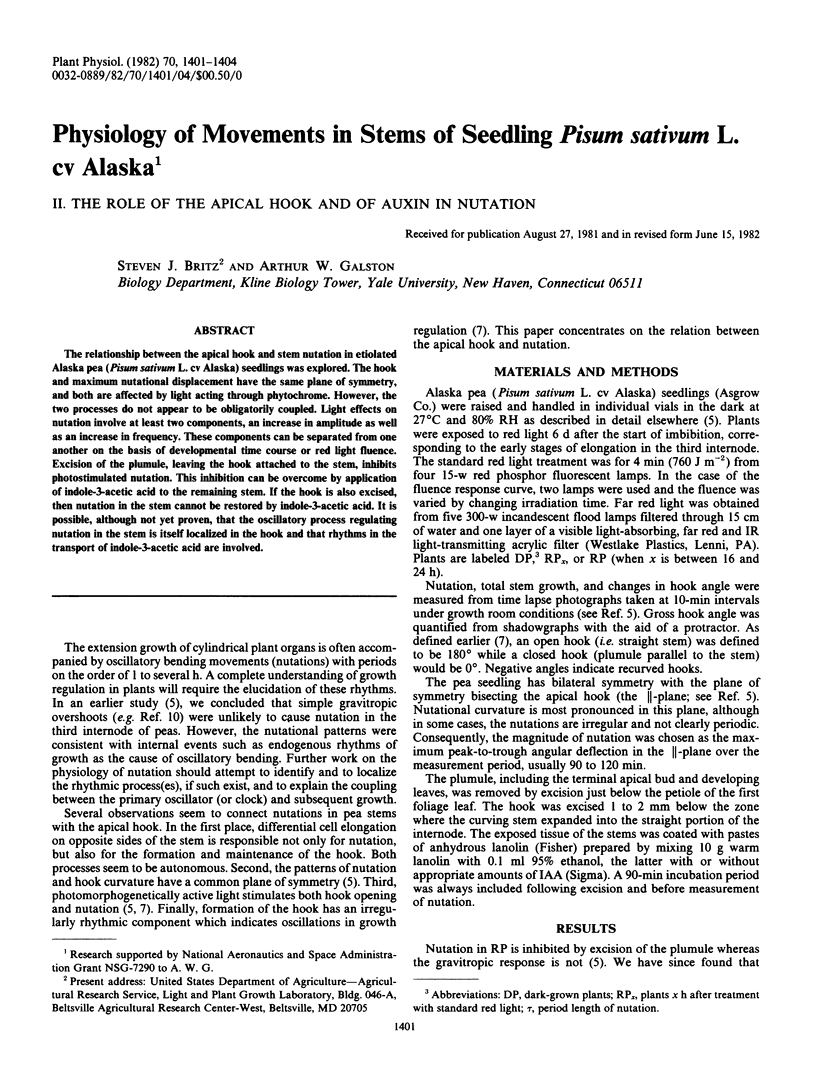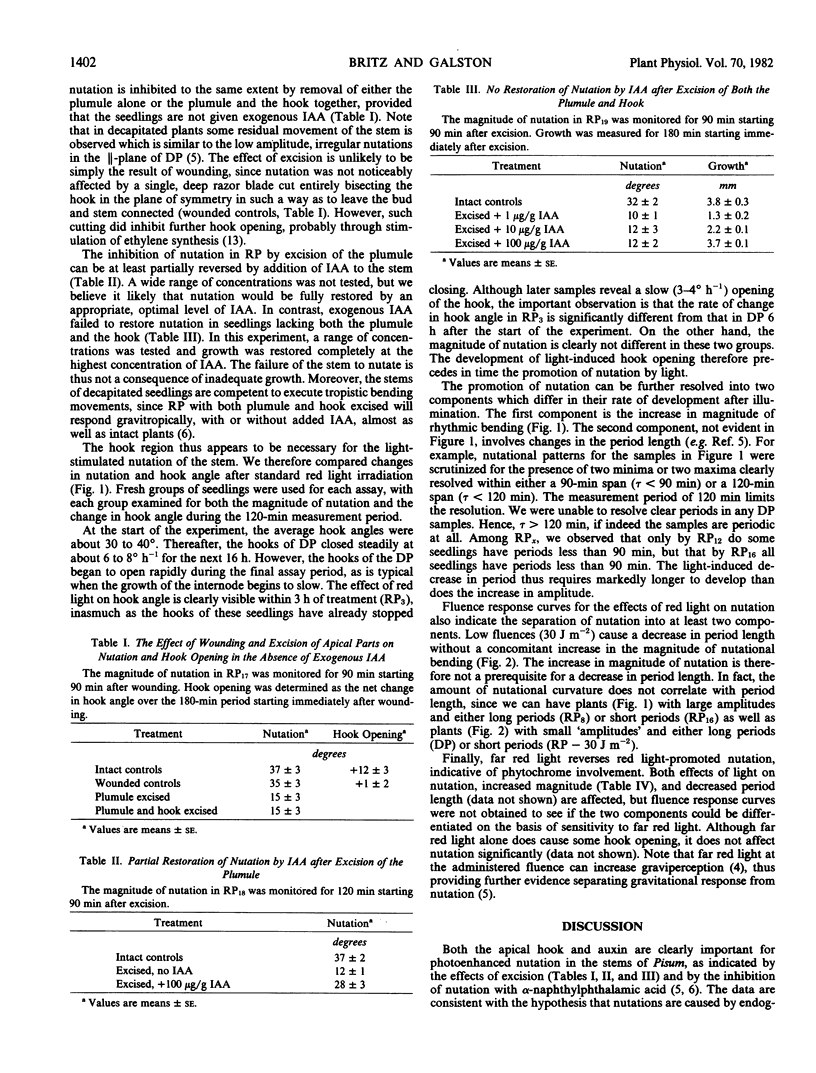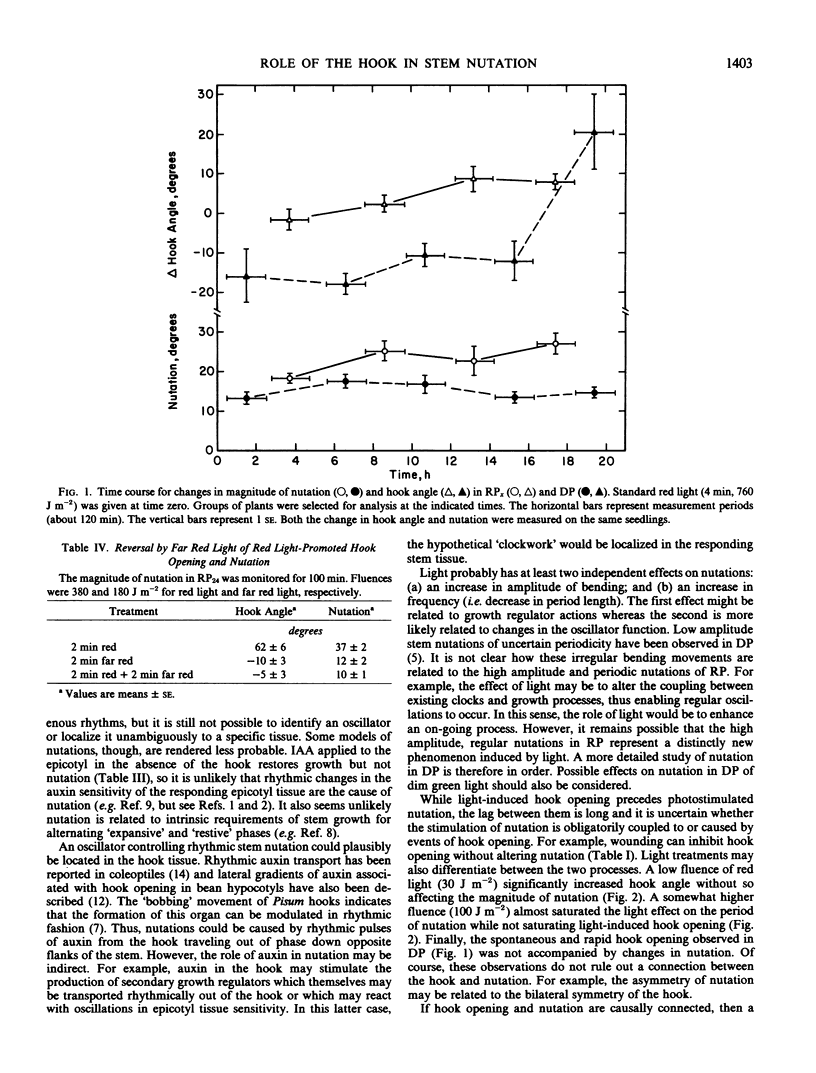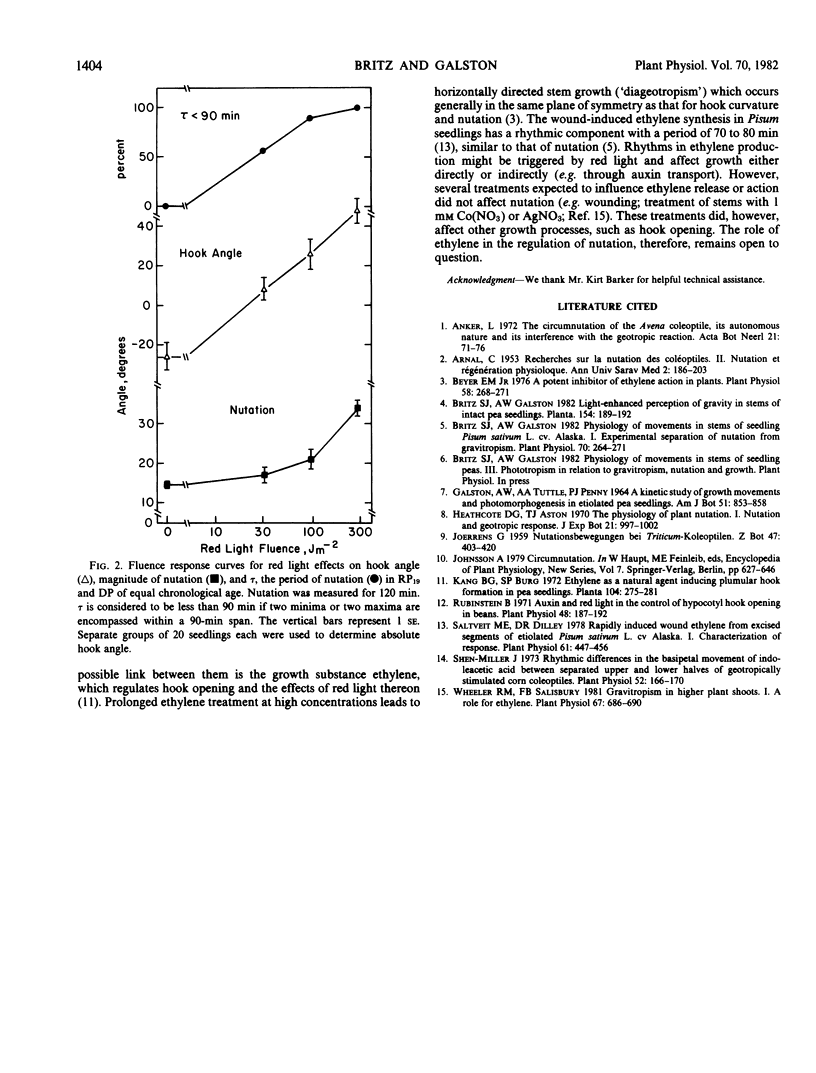Abstract
The relationship between the apical hook and stem nutation in etiolated Alaska pea (Pisum sativum L. cv Alaska) seedlings was explored. The hook and maximum nutational displacement have the same plane of symmetry, and both are affected by light acting through phytochrome. However, the two processes do not appear to be obligatorily coupled. Light effects on nutation involve at least two components, an increase in amplitude as well as an increase in frequency. These components can be separated from one another on the basis of developmental time course or red light fluence. Excision of the plumule, leaving the hook attached to the stem, inhibits photostimulated nutation. This inhibition can be overcome by application of indole-3-acetic acid to the remaining stem. If the hook is also excised, then nutation in the stem cannot be restored by indole-3-acetic acid. It is possible, although not yet proven, that the oscillatory process regulating nutation in the stem is itself localized in the hook and that rhythms in the transport of indole-3-acetic acid are involved.
Full text
PDF



Selected References
These references are in PubMed. This may not be the complete list of references from this article.
- Beyer E. M. A potent inhibitor of ethylene action in plants. Plant Physiol. 1976 Sep;58(3):268–271. doi: 10.1104/pp.58.3.268. [DOI] [PMC free article] [PubMed] [Google Scholar]
- Britz S. J., Galston A. W. Physiology of Movements in Stems of Seedling Pisum sativum L. cv. Alaska : I. Experimental Separation of Nutation from Gravitropism. Plant Physiol. 1982 Jul;70(1):264–271. doi: 10.1104/pp.70.1.264. [DOI] [PMC free article] [PubMed] [Google Scholar]
- Rubinstein B. Auxin and red light in the control of hypocotyl hook opening in beans. Plant Physiol. 1971 Aug;48(2):187–192. doi: 10.1104/pp.48.2.187. [DOI] [PMC free article] [PubMed] [Google Scholar]
- Saltveit M. E., Dilley D. R. Rapidly Induced Wound Ethylene from Excised Segments of Etiolated Pisum sativum L., cv. Alaska: I. Characterization of the Response. Plant Physiol. 1978 Mar;61(3):447–450. doi: 10.1104/pp.61.3.447. [DOI] [PMC free article] [PubMed] [Google Scholar]
- Shen-Miller J. Rhythmic Differences in the Basipetal Movement of Indoleacetic Acid between Separated Upper and Lower Halves of Geotropically Stimulated Corn Coleoptiles. Plant Physiol. 1973 Aug;52(2):166–170. doi: 10.1104/pp.52.2.166. [DOI] [PMC free article] [PubMed] [Google Scholar]
- Wheeler R. M., Salisbury F. B. Gravitropism in Higher Plant Shoots: I. A ROLE FOR ETHYLENE. Plant Physiol. 1981 Apr;67(4):686–690. doi: 10.1104/pp.67.4.686. [DOI] [PMC free article] [PubMed] [Google Scholar]


